What Is Tempera Paint? – How to Use Tempera Paint and How is it Made
This post may contain affiliate links. We may earn a small commission from purchases made through them, at no additional cost to you.
Painting is great to keep the kids busy, but it can also be used as an educational tool. Trying to decide what is the best type of paint to use can be challenging, as there are so many different types of paint available. For kids of all age’s two types of paints come to mind, they are tempera paint and finger paint, both of which are ideal for your kid’s art projects. Both types of paint have very similar qualities but will produce noticeable differences when applied. Tempera paints are inexpensive and are used a lot in schools as they are very easy to use. We will be discussing the make-up, uses, properties, and how to use tempera paint further in this article.
Table of Contents
- 1 What is Tempera Paint?
- 2 More Details About Tempera Paint
- 3 Tempera Paint Uses
- 4 What Surfaces are Best for Tempera?
- 5 Does Tempera Paint Dry Quickly?
- 6 Is Tempera Paint Washable?
- 7 Tempera Paint vs Acrylic
- 8 Textures and Colors
- 9 Archival Qualities
- 10 Best Surfaces to Paint On
- 11 Comparison Table Tempera vs Acrylic Paints
- 12 How to Use Tempera Paint
- 13 Painting Techniques Using Tempera Paints
- 14 Conclusion
- 15 Frequently Asked Questions
What is Tempera Paint?
Tempera paint, also referred to as “poster paint”, is a water-based paint that is mixed using a chemical binding agent, and is allergen-free and non-toxic. How is tempera paint made? The fundamental ingredients include starch, water, calcium carbonate, cellulose, and pigments. The paint is used extensively for children’s arts and crafts projects and, therefore, it is also used in schools. Tempera is easy to use, comes in many bright colors, is very flexible, and is easy to clean up using some soap and water. Tempera paint for kids is often confused with “egg tempera”; however, this is a completely different product.
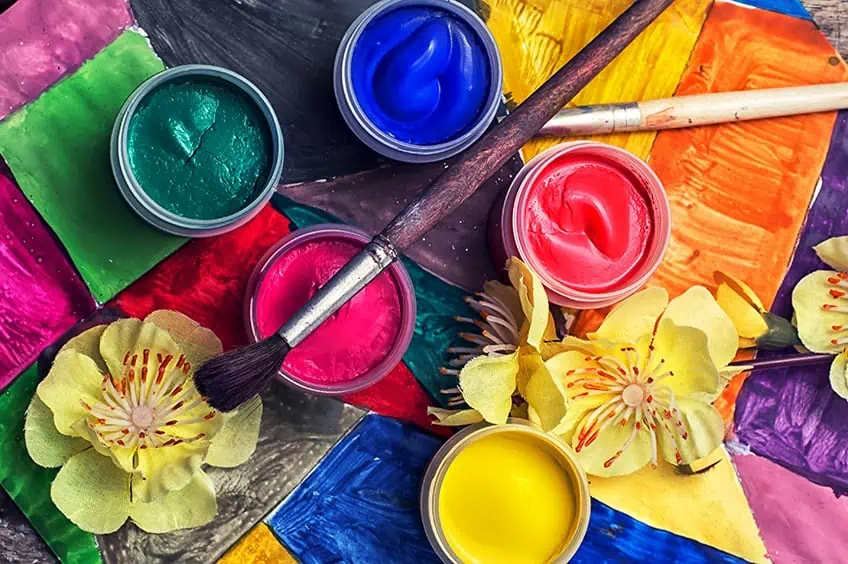
Egg Tempera Paint
Egg tempera is a paint used only by professional artists. How is tempera paint made? This type of tempera is a mixture of eggs and pigments that are artist-grade, where the egg acts as a binder. This type of paint is very old and was the traditional painting medium used from the 1600s and examples of this type of painting medium can still be seen in museums today. The paint is still in use by some professional painters today, but it is very difficult to obtain, which is why many artists prefer to make their very own egg tempera paint. With the introduction of oil, acrylic, and watercolor paints, it is not used so much by artists today, as these paints are a lot easier to obtain and to use.
However, the egg tempera does have some amazing qualities, as the pigments used have extraordinary saturation ability and covering power. However, with the use of the artist pigments, some of the egg tempera paints are toxic. Therefore, egg tempera paint is not suitable for use by children.
The true egg tempera paint is made from a mixture of fresh egg yolks; some artists use the egg whites while others use the whole egg. Other combinations include casein glue mixed with linseed oil, egg yolk mixed with linseed oil and gum, and also egg white with poppy oil or linseed oil. Some of William Blake’s paintings have decayed and darkened over the years, and the thought is that he mixed some of his pigment with carpenter’s glue, which caused the paint to deteriorate.

What is Powdered Tempera Paint?
Whenever you take dried powder color pigments and you mix them with various other ingredients, such as egg and distilled water, you will create tempera paints. The use of powdered tempera paint lost favor after the Renaissance period, but it has once again found its place with many artists. You can now buy condensed tempera paint in powder form, and all you need to do is mix it with some water and you have liquid tempera paint.
So, if you are attempting to mix the traditional tempera paint using eggs and water, or you are simply mixing some water with the tempera paint powder, this form of tempera paint is great and can be used successfully for all artists no matter what their skill level.

More Details About Tempera Paint
Tempera paint is the generic name given to an inexpensive water-based craft paint used by children. Unlike egg tempera, which is specially designed for use by professional artists. When the term tempera paint is used, it is referring to an inexpensive paint that is used extensively in schools for children and is non-toxic. The only similarities that exist between the two are the ability to apply multiple layers of paint, as well as its fast drying time. We will now explore the tempera paint in greater detail and hopefully, answer all your questions. Also, we will show that this type of paint is safe to use for kids of all ages.
All paint is made by using a combination of binder and pigment. The pigment is often found in powder form, and the binder is the glue that binds the pigment. When these two are mixed, they form the paint we use. The pigment is also the substance that enables the paint to stick to the paper or the canvas.
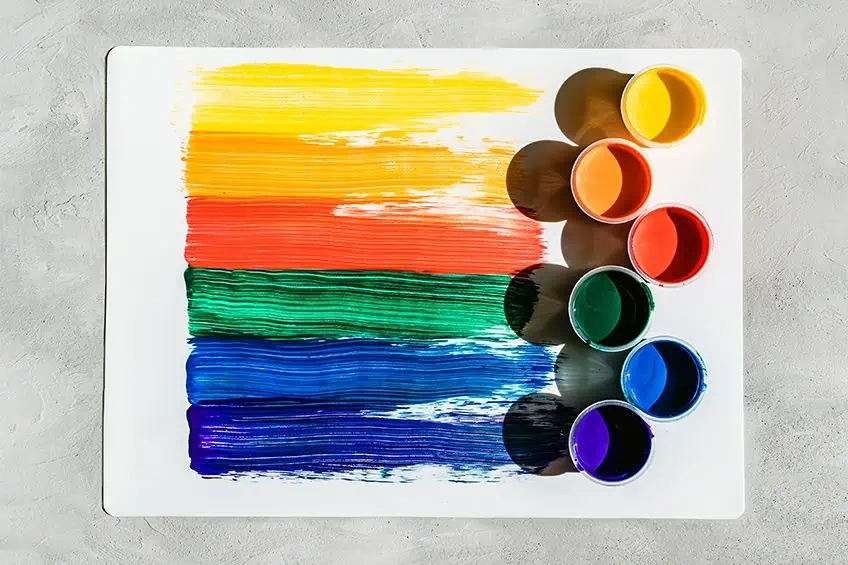
The ingredients that make up tempera paint are a combination of calcium carbonate, water, preservatives, and non-toxic pigments. Watercolors and gouache use Gum Arabic for a binder, whereas tempera paint uses cellulose or starch because it is not as expensive as Gum Arabic. The ingredients used for tempera paint can vary from manufacturer to manufacturer, so you need to read the label when you buy your tempera paint.
Calcium carbonate is another name for chalk and this ingredient gives your tempera paint opacity as well as a matte finish. You will notice that when your tempera paint dries, it has a very similar appearance to that of gouache. None of the manufacturers give you details as far as the pigments they use, but they do specify that they are non-toxic, which leads us to believe that they use food-grade colorants that are cheap instead of artist-grade pigments.
Does Tempera Paint Contain Allergens?
Some of the tempera paints are allergen-free, which means they do not contain any dairy, egg, casein, peanuts, latex, soy, tree nuts, or gluten. All of the popular tempera paint brands give a list of all the allergens that their products do not contain on their labels. So, even though the manufacturers do not reveal all the ingredients they use to make their tempera paints, they do show if their brand contains any common allergens.
Is Tempera Paint Toxic?
Most of the popular tempera paint brands carry the AP (Approved Product) Certification Seal, which certifies that the materials are safe and non-toxic, and will not cause any harm to people including children who use them. So, compared to egg tempera, which is the artist’s professional paint, tempera paint is the safest option to use.
The egg tempera paints often contain pigments that are toxic like cadmium or cobalt, which may be fairly safe for an adult to use, but not for children as they tend to get paint all over the show and can often end up in their mouths.
All the artist-grade paints disclose the pigments that they have used in their paints on the label. However, the tempera paints do not disclose the pigments they have used, only to say they are non-toxic. Even though it states the paint is non-toxic, it does not mean that it can be put into a child’s mouth or come into contact with their eyes. For this reason, you should read the Safety Data Sheets (SDS) of a product.
Will Tempera Paint Fade Over Time?
Since tempera paints contain non-toxic pigments, the paint is not permanent and will eventually fade. However, there are a couple of premium tempera paint brands that advertise they are lightfast, which indicates they are fade-resistant. If the label on the paint does not state that it is lightfast, then you have to assume that the paint will fade over time.
There is a simple explanation for this, as it is rather the child’s safety that is more important and not the longevity of the painting. Some of the more popular brands like Blick state that the paint is fade-resistant only for a few months. So, if you want to preserve your child’s painting, you need to try using student-grade acrylic paint or watercolor paints that are non-toxic.
Tempera Paint Uses
Tempera paint is used for craft projects, school classroom projects, posters, theatre props, painting windows, color mixing exercises, and much more, but the best results can be found when used on paper, cardboard, and poster board. In schools, the children use tempera paint to paint various pictures on drawing paper or poster boards, and art students use it to add some color to their art project. You can get your kids to make Papier-Mache objects, figurines, or masks and then paint them. Any projects that use cardboard, or other absorbent surfaces, should take tempera paints.
When teaching children art, tempera paints can be used to show children how to mix colors. However, we suggest that you keep this exercise very simple as color mixing is a very complex topic. In other words, stick to the easy mixing examples, like when you mix yellow with red you get orange, or when mixing yellow with blue you get green.
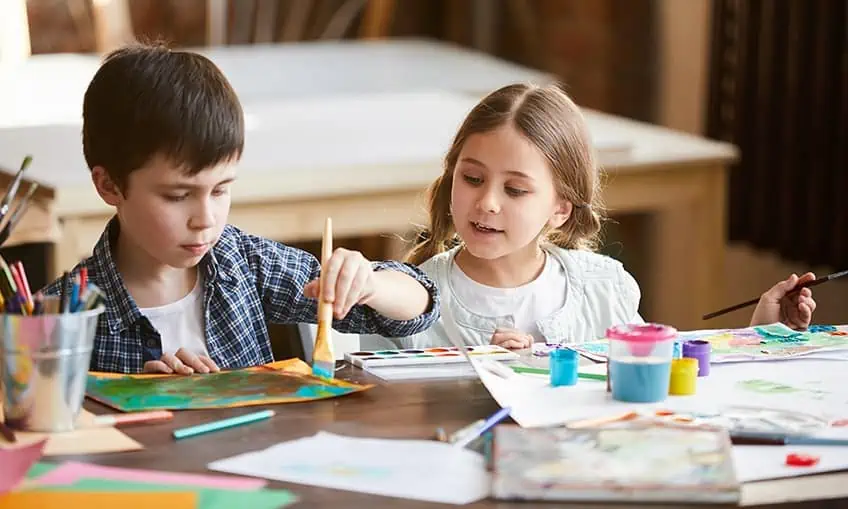
What Surfaces are Best for Tempera?
Tempera paint performs best when applied to paper, Papier-Mache, or cardboard, and can also be applied to several types of absorbent surfaces. However, the paint is not permanent and cannot be used if you want your project to last for a long time. Let us consider a few of the different surfaces that you can apply tempera paint to.
Tempera Paint on Canvas
You can make use of tempera paint on a canvas surface, but it may present some problems. Canvas is a very flexible material and may cause the paint to crack when it dries, especially when thick layers are applied. Since tempera paint remains water-soluble, when several layers of paint have been applied, it can damage the paint and cause the layers of paint underneath to be reactivated, therefore acrylic or oil paints are more suited for canvas.
As soon as an artist considers using a canvas for their paintings, it is because they have advanced to the stage that they want to preserve their paintings for a long time. Therefore, they will most likely change to another medium and not tempera paint.
Can you use Tempera Paint on Wood?
Tempera paint on wood is possible, but it is not resilient or water-resistant. So, if you do apply it to wood, the object you painted should be kept indoors. If you want to paint on a wooden surface, you should try using a paint that is designed for wooden surfaces, like acrylic paint that is water-resistant and can also be left outside.
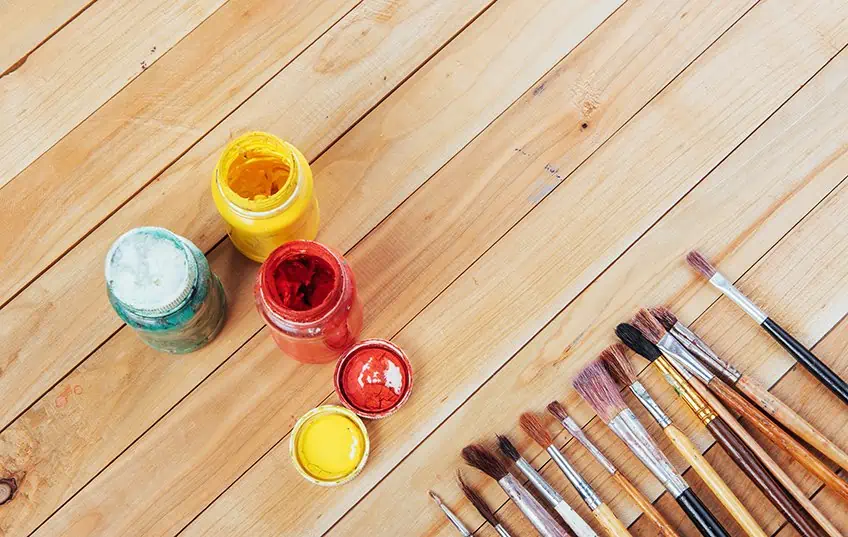
Can Tempera Paint Be Used on Fabric?
You can use tempera paint on fabrics, but because the fabric bends and stretches, the paint will ultimately flake off or crack. Experience has shown that tempera paint is not suitable for use on fabrics or clothing. Many paints are specially designed for use on fabrics, and these paints can be washed in the washing machine on a gentle cycle and will stay flexible. Some of the fabric items will require you to first heat-set the item before you wash it, to keep it from peeling off or cracking.
Can Tempera Paint Be Used on Glass?
Tempera paint is ideal for painting on glass, especially windows as it is inexpensive, temporary, and removable. The paint can effortlessly be taken off by using a wet sponge and some warm water. However, the paint might not be suitable for windows that are tinted with a plastic film applied to them.
You can use a paintbrush to paint directly onto the window. One common technique used by many is to sketch the outline of your painting in black and then just fill in the rest with the color you want to use. Since tempera paint is not permanent, your painting will flake off or crack over time and depends on environmental factors like sun exposure, rain, and humidity.
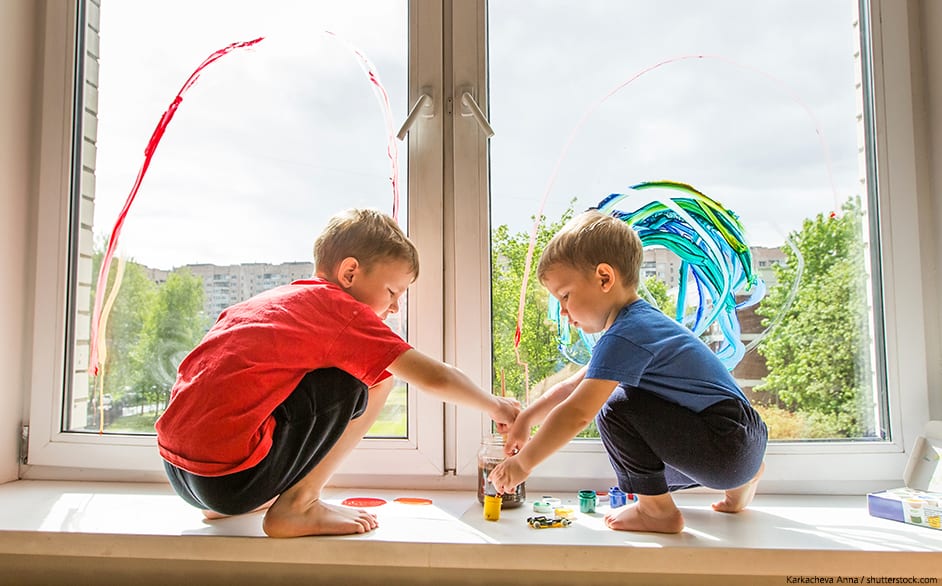
Does Tempera Paint Dry Quickly?
Tempera paint dries in about 5 to 10 minutes. The process of drying tempera paint happens when the water evaporates from the paint and is affected by air circulation, temperature, and humidity levels. So, drying times depend on the following factors:
- How absorbent the paper is
- The weather conditions
- The thickness of the paint
As a general rule, all water-based paints dry quickly when in low humidity and high temperatures, as the dry warm and dry air helps the water to evaporate quicker. However, high humidity will slow down the drying time. On the other hand, cooler temperatures will also cause the paint to dry slower as the water takes longer to evaporate. Wind and air currents will also help the paint to dry faster, even indoors when you use a fan or open the window. You can also try using a hairdryer, which should also help the paint to dry faster.
Another factor that plays a role in the drying time of tempera paint is the absorbency of the surface you are painting. Paint dries faster on a more absorbent surface, while a more solid surface will cause the paint to dry slower. Tempera paint will dry faster when used on a piece of paper that is absorbent and will dry slower when used on a piece of glass that is non-absorbent.

Is Tempera Paint Washable?
Tempera paint is fairly easy to wash off non-absorbent or hard surfaces like glass, tiles, or hard flooring materials. All you need to do is use a wet sponge and some warm water, but it may be difficult to remove from fabrics or clothing. Some special tempera paint products on the market are washable and will come out easily in the wash. Below is a comparison table, comparing tempera paint with the professional egg tempera paint. Here you can see the egg tempera paint is not washable.
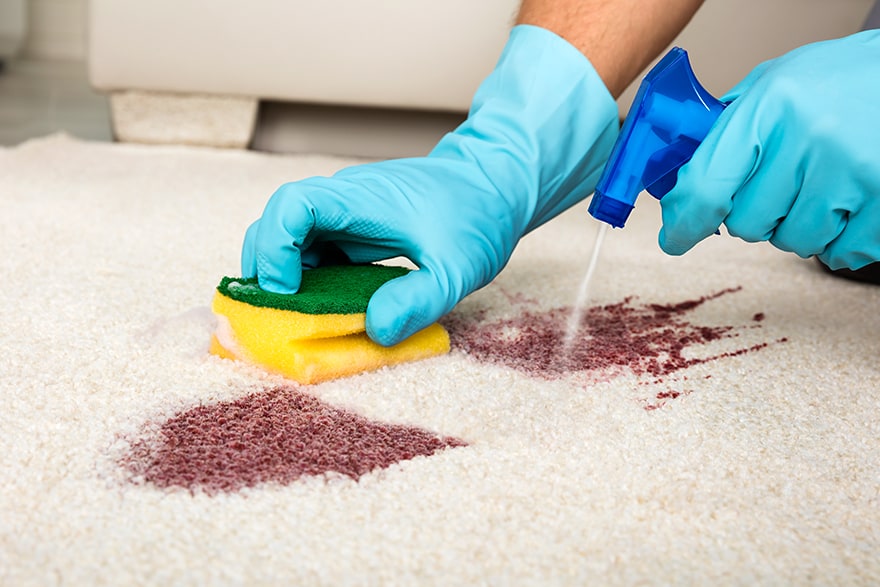
| Egg Tempera Paint | Tempera Paint | |
| Washability | ✘ | ✔ |
| Fast Drying time | ✔ | ✔ |
| Permanent | ✔ | ✘ |
| Toxic | ✔ | ✘ |
| Ease of use | ✔ | ✔ |
Tempera Paint vs Acrylic
The only thing that both the acrylic and tempera paints have in common is that both of them are water-based. However, that is where the similarities end. The most important difference between tempera paint and acrylic paint is how you use the paint. Tempera paint is used mainly by children in schools, as well as for various arts and crafts projects, whereas acrylic paint is used more by professional painters and students. Acrylic paints offer the user a lot more options for different textures, blending, glazing, and being able to apply it with a palette knife. Below are a few more comparisons concerning tempera paint vs acrylic.
Textures and Colors
Tempera paints are mostly opaque, but acrylic paints are obtainable in opaque and can be used as transparent colors. This aspect has an important part to play in painting, as transparent colors create superb glazes and watercolor effects.
Acrylic paints have a lot more options available for creating different textures, for example, you can get a variation of textured gels that consist of pumice, fibers, glass beads, sand, and much more. They also come in a variety of thicknesses and finishes, for example, if you add matte or gloss to your acrylic paints, you can alter the surface sheen. On the other hand, tempera paints always dry to a matte finish.
Archival Qualities
Acrylic paints are more archival than tempera paints, and longevity is a huge concern for the professional artist who wants their paintings to last a long time. The main reason for the longevity of acrylic paints is the acrylic polymer that is used for the binder, which will always remain flexible even once the paint has dried. Acrylic paint has a shelf life of 10 to 15 years, whereas tempera paint can only last for 2 to 5 years. All of the artist-grade acrylic paints, and even some of the student grades, are lightfast which means that they are resistant to fading.
This is very important for a painting because once you have applied acrylic paint, and it has dried, it is there to stay. The acrylic paint becomes permanent, but tempera paint is only semi-permanent as they are re-soluble, very similar to watercolor paints. When painting with acrylic paints, you can apply thicker layers of paint without worrying about paint cracking. Tempera paints are inclined to crack very easily when thicker layers are applied.
Best Surfaces to Paint On
What kind of surfaces can you use acrylic and tempera paints on? Acrylic paints can be used on almost any surface including fabric, paper, wood ceramics, plastic, canvas, metal, mirrors, glass, rock, and much more. Tempera paints are best used on cardboard, poster boards, paper, Paper Mache, but can also be used on wood, mirrors, and glass.
Can acrylic and tempera paints be used on human skin? Acrylic paints have not been designed for use on human skin, as your skin is very sensitive. Even if the label states that it is non-toxic, it does not mean that you can use it on your skin. Tempera paints, on the other hand, are safe to leave on the skin until you want to wash it off. However, the paint will eventually fall and flake off if you leave it on long enough.
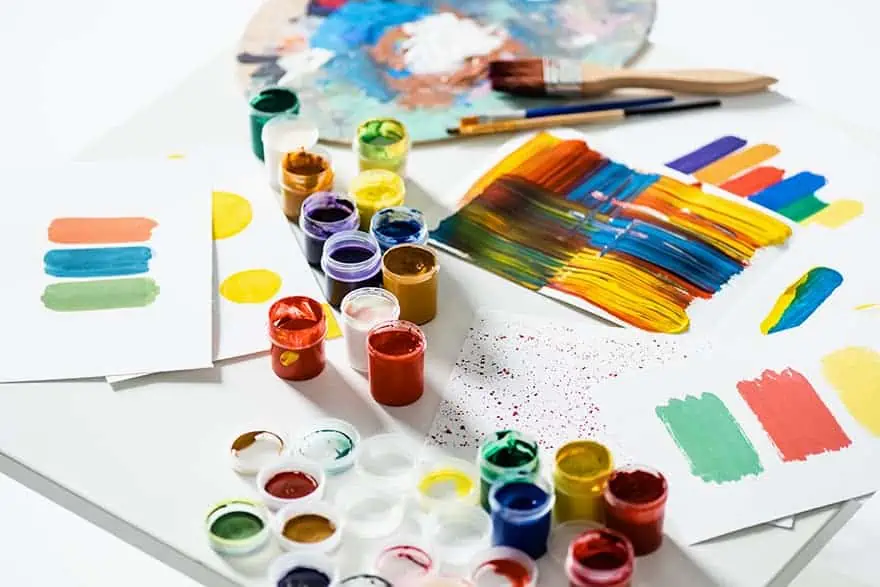
Comparison Table Tempera vs Acrylic Paints
Now that we have considered the main differences between acrylic and tempera paints, we have created a table for easy reference. Hopefully, this will help you to decide what type of paint you should choose for your project; whether it is a painting you want to preserve or do you just want to have a fun time spending with the kids?
| Tempera Paint | Acrylic Paint | |
| Permanent | ✘ | ✔ |
| Washability | ✔ | ✘ |
| Mixes well | ✔ | ✔ |
| Lightfast | ✘ | ✔ |
| Finish | Matte | Matte or gloss |
| Drying time | Fast | Fast |
| Viscosity | Thick | Thick |
| Color | Opaque | Transparent or opaque |
| Texture | Limited | Unlimited |
| Toxic | ✘ | ✔ |
How to Use Tempera Paint
Tempera paint is a painting medium that has several special qualities, such as it is cheap, non-toxic, and comes in many pure bright colors, making it ideal for use by children of all ages. However, it can also maybe appeal to the professional artist. The art of painting can be challenging and time-consuming, however, when it comes to learning how to use tempera paints, it is very easy and even a small child can master it. First, the items that you will need include:
- The different colors of tempera paint
- Paper or cardboard
- Water
- Brushes
- Pencil
- Plate and cup
- Craft sticks
- Soap
- Paper towels

Preparation for Painting
Make sure all your tools and equipment are close by and easy to reach. As your tempera paint dries fast, you cannot waste any time and you need to work quickly. Having your tools arranged properly before you start will save you time. Make sure that you pour some water into the cup and have it ready to wash your bushes when you need to, you can always use more than one cup if you want.
Creating an Outline of Your Work
Now that you are ready, take your pencil and draw an outline of the picture you want to paint on the drawing paper or whatever type of surface you have prepared. Tempera paint is better to use on still surfaces like cardboard, poster board, Paper Mache, or wood as you may find the paint tends to crack or flake when applied to paper. Some artists prefer to use paper for their tempera painting, and it is also the best surface to use for your kids.
Preparing and Mixing the Tempera Paint
Place the paint you want to mix onto the plate or palette and use the craft stick to mix them. You can use the paintbrush, but it tends to be a bit messy, especially if you are mixing large amounts of paint. Even if you do not intend to mix your paints, put the paint onto the plate or palette as it is not a good idea to dip your brush directly into the bottle. Only put the amount of paint you are going to use on the plate, so you do not have to put the remaining paint back into the bottle.
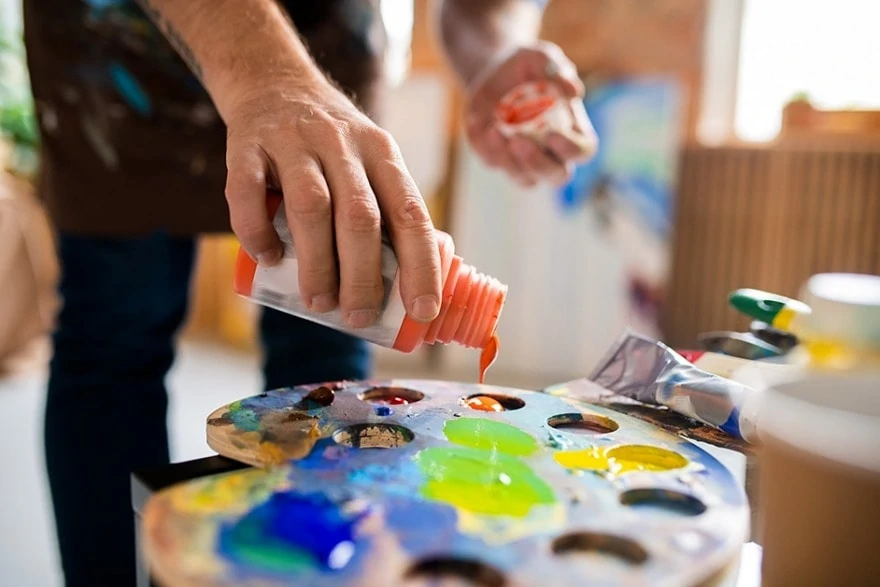
Begin Painting Your Project
Use your brush to apply the paint to the surface you are painting on, and remember to use thin layers as tempera paint does not blend well when you apply thicker layers. Each layer of tempera paint you apply to the surface is a reflection of the layer underneath it, so painting with thin layers is the best method to use when using tempera paints.
Now you can build up the layers as you go, but remember to allow the bottom layer to dry before you apply the next layer. Use the water in the cup to wash your brushes and wipe off the paint with a paper towel before you change to a different color.
Make sure you clean your brushes with some soap and water directly after you are finished painting as the tempera paint dries fast. Also, ensure that the caps of the paint bottles are on tightly to avoid the paint drying in the bottles.
Painting Techniques Using Tempera Paints
When it comes to tempera paints, you can transform your art piece using textures that make all your art projects come to life. Let us have a look at three popular painting techniques that can be used with tempera paints.
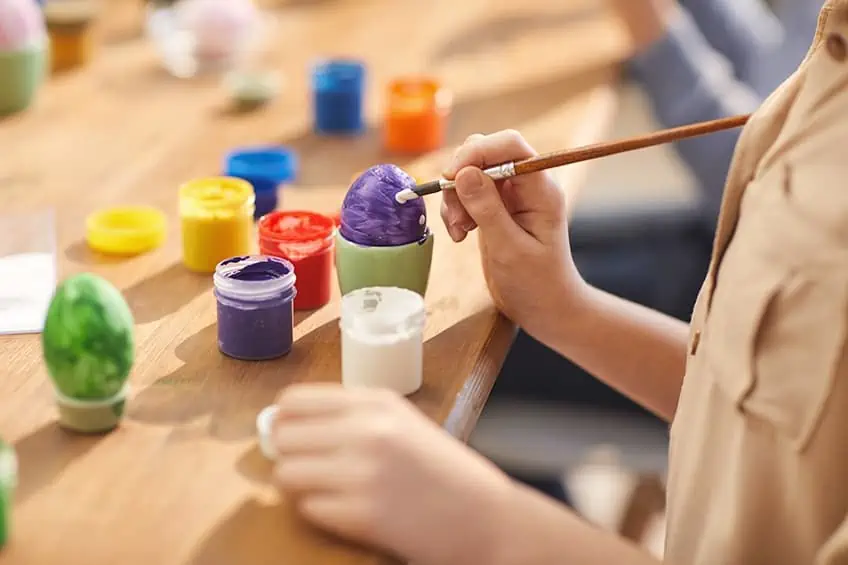
Double-Loading
This technique involves adding more than one paint color onto your brush before you apply it to the paper. Normally you are taught to dip your brush into one of the colors on your palette and then apply it to the paper, or you mix the colors that are on your palette first before you apply it. Double-loading is a mixture or a blending of these two options.
This technique not only creates some very interesting new colors but also saves you a lot of time as mixing colors on your palette is very time-consuming, and it will take a long time for you to complete your project. This technique is also very helpful if you have a group of kids together and helps to speed up the painting process. The process is as follows:
- First, put about three to five colors of paint onto your palette, it is always advisable to include a white in your mix
- Put your brush into one color and then scoop up a small amount of another color
- Brush the paint mixture onto the paper surface, the more you brush it, the more it will blend
- You can even try loading three colors onto your brush to see what effect it has
- Try not to use too much water with this technique
Scratching
If you want to liven up or make your painting more exciting, try the scratching technique and see what different designs, textures, and patterns you can create. You need to apply two layers of paint to the surface, one on top of the other to make this technique work.
- Apply one layer of paint onto the paper surface
- Allow about five minutes for that layer of paint to dry, and then apply a second layer that is a different color over the first layer
- Next, take your craft stick or even the back end of your brush and scratch any design or pattern you want to into the wet layer of paint
- You need to work fast as this technique only works when the bottom layer is dry and the top layer is still wet
Smoothing
This technique is not often used by many artists, but the result is quite amazing and effective. The technique is referred to as smoothing, as it leaves the paint with a beautiful smooth finish. This type of technique is best used when painting backgrounds or when painting large areas.
- Put your brush into the paint and apply the paint to an area on the paper
- You will notice that there are spots on the paper that have globs of paint on and other places where the paint is a lot thinner, no reason for alarm as this will be rectified later
- Allow the paint to dry for about three to four minutes, then go back over the same area and smooth the paint out using a dry brush, preferably a flat edged brush
- This will cause the globs of paint to thin out, creating a beautifully smooth finished surface
- Make sure that you use a dry brush for this technique as a wet brush will not have the same effect
Conclusion
As far as paints go, tempera is best for kids as it is easy to clean up and it is less toxic. Tempera paints are affordable and are ideal to use at schools and for other arts and craft projects. We also now know that egg tempera paints are different and are only used by professional artists. However, older students, as well as older artists, can also easily work with modern tempera paints, maybe even consider combining them with other non-toxic paints. After all, art is about letting your imagination soar.
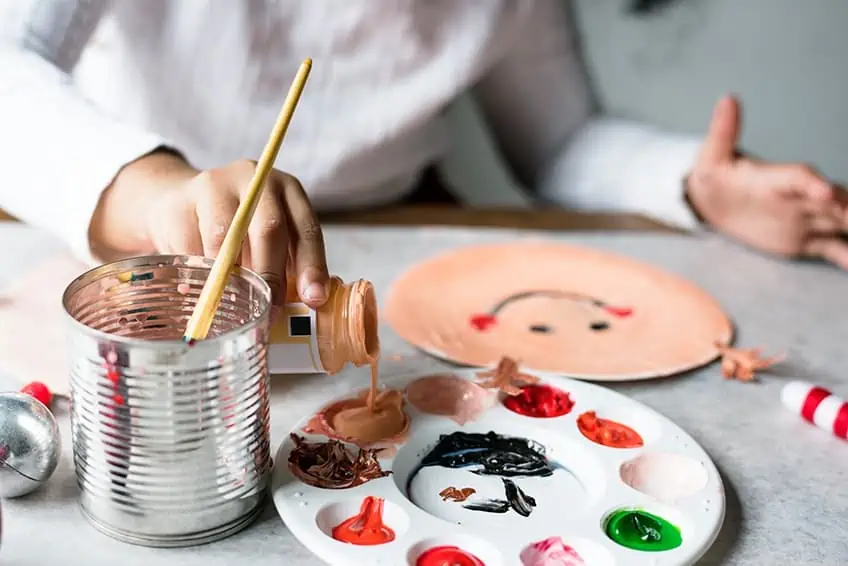
View our Tempera Paint web story here.
Frequently Asked Questions
What Paper Is Best For Tempera Paints?
The best type of paper for tempera paints, oil paints, chalk pastels, markers as well as watercolor paints is sulfite paper, as it is nice and smooth. When using this paper, it is suggested you do not use less than 80 or 90 pounds, or else the paper tends to curl or tear.
What Is The Difference Between Poster Paint and Tempera?
The term poster paints is a general term used for colorful paints and is used mainly for painting signs and posters. Poster paints do not refer to any specific type of paint, and many of these paints are tempera paints. Most of the poster paints are not permanent and are used only for illustration purposes, but the bright colors are what attract people to them.
Are Tempera And Acrylic Paints the Same?
Tempera paints are normally used by children for their school projects and other types of art and craft projects. On the other hand, acrylic paints give you a lot more options like blending, glazing, and creating amazing textures. Acrylic paints are also permanent and are used by students and professional painters, while tempera paints are not permanent.
Is Tempera Paint Washable?
Tempera paint is completely washable and very easy to clean, which is why it is used by children of all ages. However, if spilled on clothing, it might cause some staining as the dyes used are very strong and may result in permanent stains.
Is Tempera Paint Waterproof?
Tempera paint is not flexible or waterproof, so it is not suitable for use on fabrics or clothing. There are paints available on the market that are specifically manufactured for use on fabric.
Can You Add Water to Tempera Paint?
Tempera paint is water-based, so you can add water to thin it and give it a smooth consistency. This may be a good idea as the paint is fairly thick and could be difficult to manage.
In 2005, Charlene completed her wellness degrees in therapeutic aromatherapy and reflexology at the International School of Reflexology and Meridian Therapy. She worked for a company offering corporate wellness programs for several years before opening her own therapy practice. In 2015, she was asked by a digital marketer friend to join her company as a content creator, and it was here that she discovered her enthusiasm for writing. Since entering the world of content creation, she has gained a lot of experience over the years writing about various topics such as beauty, health, wellness, travel, crafting, and much more. Due to various circumstances, she had to give up her therapy practice and now works as a freelance writer. Since she is a very creative person and as a balance to writing likes to be active in various areas of art and crafts, the activity at acrylgiessen.com is perfect for her to contribute their knowledge and experience in various creative topics.
Learn more about Charlene Lewis and about us.
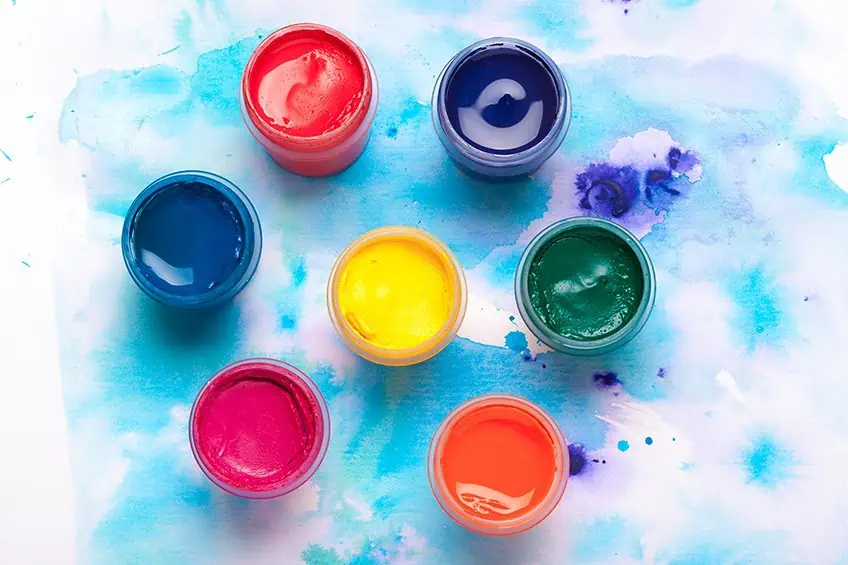

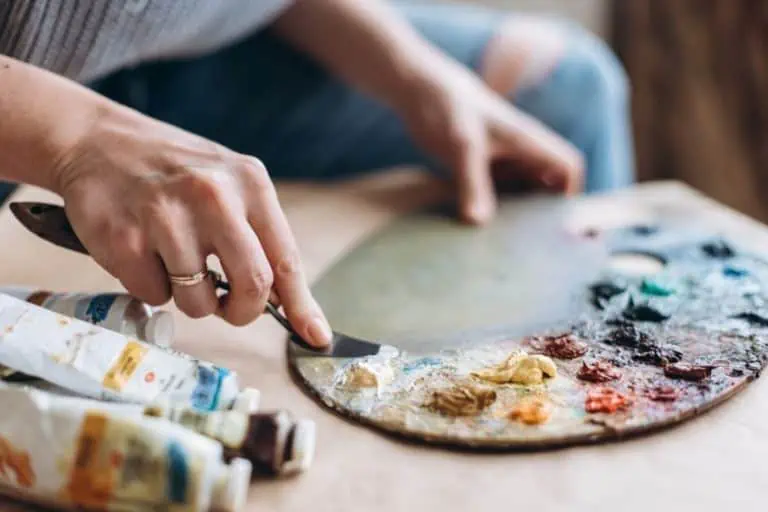

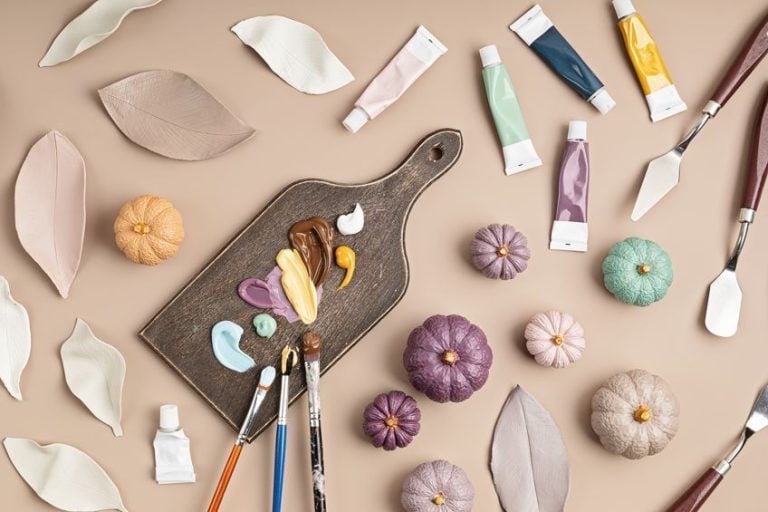

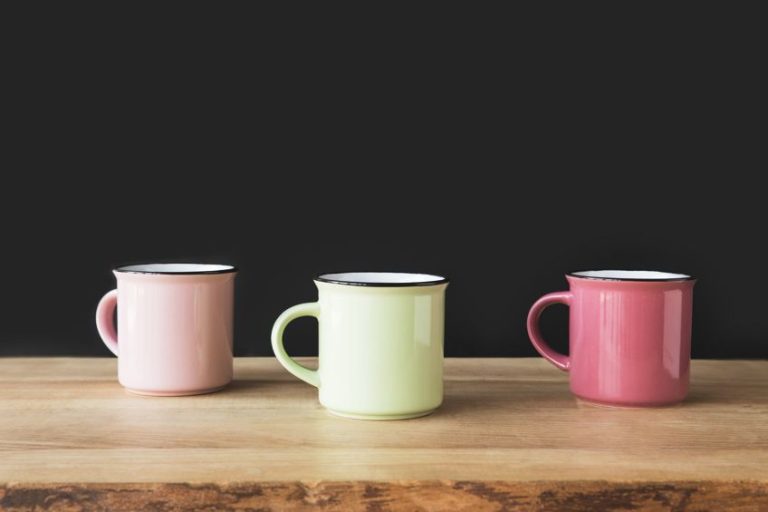
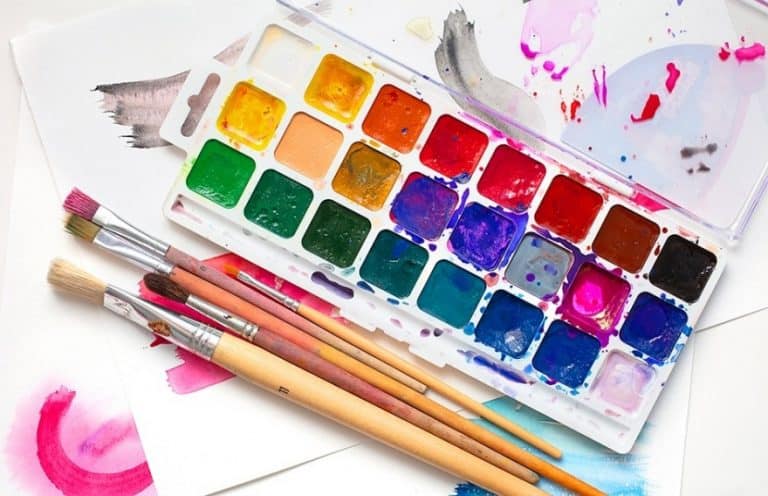
Thanks for all the great info.
I inherited some paints from an art teacher uncle of mine and look forward to trying them out.
Thank you Brandon for your feedback, it’s good to hear our article was helpful to you.